*Biographies from 1910 to 1960 are based on information found in Eleanor Eells' History of Organized Camping: The First 100 Years.
Charles R. Scott, 1910
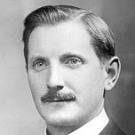
After being educated in the New York Public Schools, Charles R. Scott became interested in the YMCA as boys' work secretary in Newark, New Jersey, and for twenty-nine years worked enthusiastically for the welfare of boys. He founded the New Jersey State Camp for Boys at Wawayanda, with a property and equipment valued at $80,000. Scott had a varied and successful experience in boys' clubs, in Sunday schools, in such institutions as the state home for boys, and in association with the state moving picture commission.
Dr. Elias G. Brown, 1911-1912
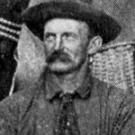
After having received his B.A. from Columbia University, Dr. Brown took his medical degree from the College of Physicians and Surgeons, and practiced medicine in New York City for eight years. He then became psychological expert for the New York City Board of Education and later the principal of a private school. For six years he was the physician at Camp Dudley and afterward at three other camps. In 1904, he founded Camp Adirondack, on Lake George, New York. Dr. Brown died early in the summer of 1921.
J. Clark Reed, 1912-1913
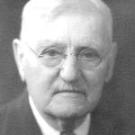
J. Clark Reed was a member of the staff of the Berkeley School in New York City. In addition, he was director of Camp Champlain in Mallets Bay, Vermont.
Dr. George L. Meylan, 1914-1915
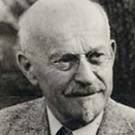
With an M.A. from Harvard University and an M.D. from Columbia, Dr. Meylan became Professor of Physical Education and the medical director of Columbia University. He was the founder and director of White Mountain Camp in Casco, Maine, and was a recognized authority on camp problems.
Edward M. Healy, 1916
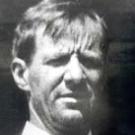
Edward Healy was the founder and director of Camp Androscoggin in Wayne, Maine. He died shortly after entering upon the duties of his office as president of the Camp Directors' Association of America.
Dr. Paul C. Kyle, 1916-1917
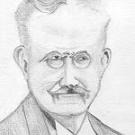
After receiving his Ph.D. from the University of Leipsig, Dr. Paul C. Kyle came to America and founded the Kyle School for Boys, at Irvington-on-Hudson, New York, and late the Kyle Camp for Boys in the Catskill Mountains.
Charlotte V. Gulick, 1916-1918
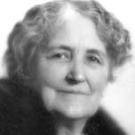
Mrs. Gulick was the first president of the National Association of Directors of Girls' Camps and the wife of the late Dr. Luther Halsey Gulick, who founded the group. She originated the idea and organization of the Camp Fire Girls, and she is the inspiration and editor of their literature. Although for a time a student at Wellesley, she received her degree from a western college. Her book, Emergencies, was well known and was used as a text in the schools throughout the country. Mrs. Gulick was the director of the Luther Gulick Camps on Lake Sebago, Maine.
Ellen Farnsworth, 1918-1919
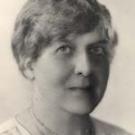
A student at Wellesley College for three years, Ellen Farnsworth won her Phi Beta Kappa key and received her bachelor's degree from the University of Colorado. Later she pursued post-graduate work at Teachers College in New York City. From 1901 to 1907, she was the head of Whittier Hall at Columbia University, and from 1907 to 1910, she was the head of Horace Mann High School. Farnsworth was a member of the National Arts Club, the Women's City Club, and the Association of Camps in the Upper Connecticut Valley; director of the National Camp Fire Girls; and director of the Hanoum Camps in Thetford, Vermont.
Herman C. Beckman, 1918-1919
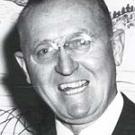
Herman C. Beckman graduated from Yale University and then became interested in boys' work in the YMCA. Later he was named director of the oldest camp for boys in the country, Camp Dudley at Westporton-Lake Champlain, New York.
Eugene H. Lehman, 1919-1920
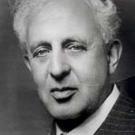
Born in Colorado, Eugene H. Lehman received a bachelor's and a master's degree from Yale University, was awarded a Cecil Rhodes Scholarship, studied at the University of Berlin, became a member of the Biblical literature faculty at Yale University, was the author of several books on religious education, was editor-in-chief of Camps and Camping, and co-originator of the course on camp leadership, given annually at Teachers College in New York City, for the training of camp directors and counselors. Lehman was the founder of Highland Manor, a non-sectarian boarding school for girls at Tarrytown-on-Hudson, New York. Beginning in 1913, he became one of the directors of Highland Nature Camps in South Naples, Maine. For four years he was secretary of the Camp Directors Association of America.
Harry Wilber Little, 1919-1920
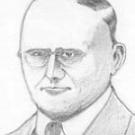
After having been awarded a bachelor's degree by Wesleyan, Harry W. Little became principal of the Maplewood Grammar School, then assistant headmaster of the Riverdale Country School, Riverdale, New York City. He was the director of Camp Wake Robin in Woodland, New York. Mr. Little was a "Sagamore" in the Woodcraft League of America.
Frank L. Bryant, 1920-1921
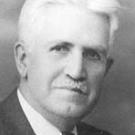
St. Lawrence University awarded Frank L. Bryant an A.B. He then became an instructor in the science department of Erasmus Hall High School in Brooklyn, New York, and was co-author of a widely used textbook called Physiography. He was president of the Board of Trustees of All Souls Church in Brooklyn and director of Camp Quinibeck in South Fairlee, Vermont.
Harriet Gulick, 1920-1921

Born in Cesarea, Turkey, with missionaries as parents, Harriet Farnsworth was reared to a life of service in a home of culture. Coming to America at the age of thirteen, she graduated from Wellesley College in 1889 and taught school for two years before she married Edward Leeds Gulick, pastor of the Congregational Church of Groton, Massachussetts, and later head of the English department at the Lawrenceville School, in Lawrenceville, New Jersey. In 1905, Mr. and Mrs. Gulick founded Camp Aloha at Fairlee, Vermont, starting with eighteen campers.
Philip D. Fagans, 1921-1922
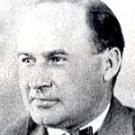
Philip D. Fagans was the director of the YMCA camp at Trenton, New Jersey, of the West Side YMCA Camp of New York City, and the founder of Greenkill Camp in Kingston, New York. While at Greenkill, he became interested in the need of emphasizing nature handicraft in camp work and was brought in touch with Earnest Thompson Seton. When Seton founded the Woodcraft League of America, Fagans was invited to become the executive secretary of the League.
Dr. J. Wilford Allen, 1921-1923
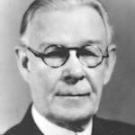
Born and educated in New York City, Dr. J. Wilford Allen received his M.D. degree from the Homeopathic Medical College and served as an intern at the Flower Hospital in New York City. Later, he became professor of materia medica at the Homeopathic Medical College and visiting physician at the Flower Hospital, Hahnemann Hospital, and the Metropolitan Hospital; he retired from practice in 1920. In 1914, he founded Camp Po-ne-mah in Connecticut.
Harvey C. Went, 1922-1923
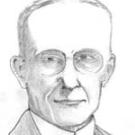
Born and educated in Brooklyn, New York, Harvey C. Went graduated from the New Haven Normal School of Gymnastics, then located at Adelphi College, and studied for a year at the Long Island College Hospital. He was supervisor of physical education in the public schools of Bridgeport and a "Y" physical director in France. He was scout commissioner in Bridgeport from the inception of Boy Scouts. He was a Sagamore in the Woodcraft League, a Rotarian, and director of Camp Kinapik in Lovell, Maine.
Walter A. Keyes, 1923-1924
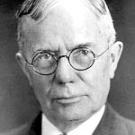
Dr. Walter A. Keyes was the last president of the Camp Directors Association before it merged with the National Association of Directors of Girls' Camps. Dr. Keyes was a high school principal. He founded Norway Pines Camp in 1897. The characteristic feature of Norway Pines was that the boy campers were largely self-directed, self-entertained, and their work was intended to be constructive in nature.
Dr. George L. Meylan, 1924

With an M.A. from Harvard University and an M.D. from Columbia, Dr. Meylan became Professor of Physical Education and the medical director of Columbia University. He was the founder and director of White Mountain Camp at Casco, ME, and was a recognized authority on camp problems.
William Gould "Cap'n Bill" Vinal, 1925
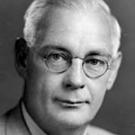
Educator and author, Dr. William Gould "Cap'n Bill" Vinal was president of the National Association of Directors of Girls' Camps in 1923. He was a key personality in the merger at that time with the Camp Directors Association of America, forming a new organization, the Camp Directors Association. He became the second president of the Camp Directors Association. He was a naturalist who urged nature training for staff. He has been described as intelligent, whimsical, personable, innovative, and always unconventional.
H.W. Gibson, 1926-1928
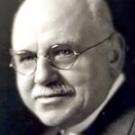
Henry William Gibson was a member of the Association at the time it was founded in 1910. He began his camping experience in 1889 as director of YMCA Boys Camp at Scheibleys Grove in Lancaster, Pennsylvania. He served as the director of YMCA Camp Becket-in-the-Berkshires from 1904-27. In 1931, he and his wife founded Chimney Corners Camp for Girls – serving as camp director until 1941. He was an author of six widely-read articles on camping during the early years of the Association, and later became editor-in-chief of the Camp Directors Bulletin. He was a lecturer at Boston University and spoke on many occasions around the country during his presidency.
Dr. John Perley Sprague, 1929-1930
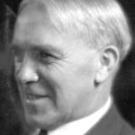
Dr. John Perley Sprague, an orthopedic surgeon, was the founder in 1904 of Camp Minocqua for Boys in Minocqua, Wisconsin, and one of the organizers of the Midwest Camp Directors Association. He also was active in bringing about a merger with the Midwest Section of Directors of Girls' Camps and eventually bringing this organization into the Camp Directors Association. He was a strong advocate of training for camp counselors.
Dr. Frank S. Hackett, 1931
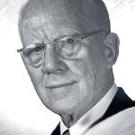
Dr. Frank S. Hackett was chairman of the membership committee of the Camp Directors Association. He received his A.B. from Columbia. He was the founder and headmaster of Riverdale School and Riverdale-on-Hudson, in New York City. In 1912, he founded Camp Riverdale at Long Lake, New York. A former vice president of the New York Section, Dr. Hackett had a strong interest in the Camp Directors Association from its organization.
Emily H. Welch, 1932
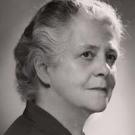
Emily H. Welch, a resident of New York City and director of two camps for girls in Maine (Wabunaki, 1910 and Puk Wabunuki, 1925), was a Vassar graduate and formerly a principal of Charlton School in New York City and of St. Catherine's in Richmond. She was the first of the women camp directors to feature campcraft, primitive living, and tripping. She was active in the camping movement, and many of her well-trained staff carried her philosophy and practice to camps in the East and Midwest. Welch resigned as president in January of 1933 but remained on the CDA board and worked hard to build the Association and to improve the contribution made to campers.
Col. Raymond F. Purcell, 1933-1934
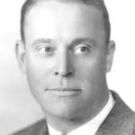
Col. Raymond F. Purcell was elected president to complete Emily H. Welch's term. He was described by two contemporaries as a big man with military bearing and attitude, who dressed in jodhpurs and carried a riding crop. He came from Colorado and was an outdoorsman, but without experience with children or organized camping. He was a promoter and concerned with publicity. He left New York in 1934 under unexplained circumstances.
Herbert H. Twining, 1935-1936
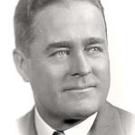
In 1934, Herbert H. Twining, a private camp director from Michigan, was elected president for a two-year term. He was an experienced and successful camp director (Camp Algonquin in Canada) who lived in Ann Arbor and had connections with the University of Michigan. He had definite ideas as to the future direction of the CDAA and its development as a strong national professional organization. The Rev. Ernest Dennen was vice president and Mrs. Donald King was second vice president. The new administration was faced with a multitude of problems: no cash, accrued debts, a small and divided membership — all in the middle of the Great Depression, when many camps were in trouble. In February 1935, the reorganized Camp Directors Association of America was incorporated as the American Camping Association with Herbert Twining as president.
Dr. Portia Mansfield, 1936
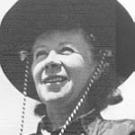
Dr. Portia Mansfield, a pioneer in modern dance, served as president of the newly formed American Camping Association for one year. In addition, she served on the National Board of Directors for many years. She was the founder of Perry-Mansfield Camp in Steamboat Springs, Colorado, the oldest dance and theater camp in the country. After the camp was given to Stephens College in 1965, Mansfield founded Perry-Mansfield Boys' Camp.
Hazel Allen, 1937-1938
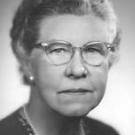
Hazel Allen of the Girl Scouts of the U.S.A. was elected president in 1937 to serve through the difficult period of expansion and reorganization. She was one of the first to practice and articulate the philosophy that administration and program are "inseparably interlocked" and that everything in camp is a part of program. Her academic background and experience were impressive. She obtained a master's degree in institutional management from Teacher's College in Columbia. She worked in the field of scientific management in addition to teaching and writing. She was the national camp director of the Girl Scouts of the U.S.A. and director of two national leadership training camps. Her books on camps and their modern administration published in 1930 by the Woman's Press and revised in 1938 and 1947 have served as valuable guides to camp executives and boards over the years.
Dr. Charles A. Wilson, 1939-1940
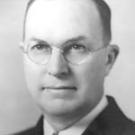
At the 1939 convention in St. Louis, Dr. Charles A. Wilson of the Merrill Palmer School in Detroit was elected president. His background and experience in child development, medical and psychological, had heightened the interest in the relationship of that field to camping, and this topic was featured in the convention program. At the 1940 convention in Asilomar, California, "Democracy in Action" was the topic of Dr. Wilson's keynote address. Dr. Wilson's tragic death late in the 1940s deprived the camping and child development field of a profound thinker, leader, and innovator.
Esther Waldo, 1941
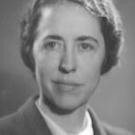
Esther Waldo of the YWCA succeeded to the presidency in another difficult period of adjustment. She was a member of the national staff of the YWCA.
p="">
Dr. Taylor Statten, Sr., 1942
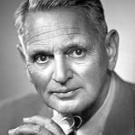
Dr. Taylor Statten, Sr., was elected to serve as president, but resigned because of illness. Wes Klusmann, vice president, assumed major executive responsibilities. Dr. Statten was the founder of Camp Ahmek and Camp Wapomeo near Huntsville, Canada. He is the only person ever to serve as president of the American Camping Association and the Canadian Camping Association.
West H. Klusmann, 1943-1944
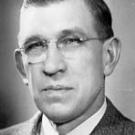
The 1943 convention was cancelled because of the war-time economy, though several excellent regional conventions were held. Wes Klusmann was elected president with Barbara Joy as vice president. Klusmann was director of camping and activities on the national staff of the Boy Scouts of America. Klusman and Joy were a healing influence and laid a foundation for ACA to rebuild and move ahead on many fronts. They were nationally known and respected, and their contribution to quality camping and good practice gave them credibility and inspired confidence. Their broad experience and different backgrounds brought strong support of volunteers in the local sections, and gave perspective and resources to the Board and Association.
Barbara Ellen Joy, 1944-1946
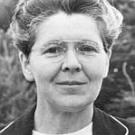
Barbara Ellen Joy was director/owner of The Joy Camps, a private camp for girls in Wisconsin. She had been active in the Camp Director's Association since 1923, a member of its board, and a member of the Executive Committee since its inception. Her standards were high, and her professional drive strong. She expected no less of ACA and emphasized the volunteer tradition. As she became president in 1944, her talents, time, and energy were devoted to service to members, organizational needs, and promotion of membership.
Carol Gulick Hulbert, 1947-1948
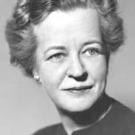
Carol Gulick Hulbert was a member of a famous camping family. She was the operator of Camp Lanakila, a private camp for boys in Fairlee, Vermont. During her ACA presidency, she carried on the task in the post World War II era of unifying the ACA membership and building confidence in the organization which had experienced many difficulties. She held office as the struggle continued as to whether ACA would be a federation of local sections or a national organization with central control, policies, and functions. There were considerable financial difficulties during this period. By the time she completed her term, the budget problem had been resolved.
Dr. Reynold E. Carlson, 1949-1950
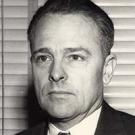
Dr. Reynold E. Carlson, a professor at Indiana University, fostered strong ties with educational agencies and governmental groups during his presidency. During the St. Louis convention, efforts had been made by the hotel to bar black ACA members from registering at the hotel. The National Board adopted a resolution that future national meetings would be held only at places that were open to all members. It was at this national meeting that ACA's new standards program was officially adopted. Dr. Carlson also obtained a $10,000 grant from the Eli Lilly Foundation to examine camping in the mid-century.
Elmer Ott, 1951
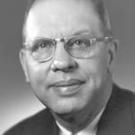
Elmer Ott, a YMCA executive and director of Camp Manitowish, Wisconsin, devoted time and effort during his presidency on personnel practices, a new contract for the printing of Camping Magazine by Galloway Publishing Company in New Jersey, and public relations. There was considerable growth during the 1950s in church camping. A camp safety digest was published during his tenure. Ott resigned after a heart attack in 1952 and was unable to finish his term.
Herbert A. Sweet, 1952
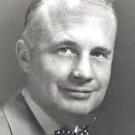
A vice president of the Association, Herbert A. Sweet became president for one year to complete the term of Elmer Ott, who was ill. Director of Acorn Farm Day Camp, which was founded in Indianapolis in 1933 during the midst of the Great Depression, Sweet presided over a Board which devoted its attention to ongoing discussions about the need for camp standards and a permanent home for the Association. Later, after the building was erected at Bradford Woods, an impoverished Association called upon Sweet to do the landscaping as a volunteer. Before the building's dedication, he also carved the motto using a log which hangs over the ACA fireplace: "Better Camping for All." In addition to directing the camp, Sweet was a newspaper syndicated cartoonist and teacher.
Catherine T. Hammett, 1953-1954
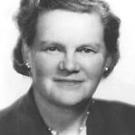
Catherine "Kit" Hammett's presidency was marked with solid progress. Finances were in excellent condition, there was greater public acceptance of camping, and the Association was moving toward a national association. She was widely known for her work in Girls Scouts of the U.S.A. An author, she wrote Your Own Book of Campcraft, which sold over 1,000,000 copies. She also wrote The Camp Program Book and Creative Crafts for Campers. She retired from the national staff of the Girl Scouts of the U.S.A. in 1967, after some 60 years in Girl Scouting.
Theodore Cavins, 1955-1956
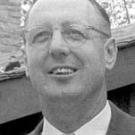
It was during the presidency of Theodore Cavins, director of Camp Mishawaka, Grand Rapids, Minnesota, that ACA raised $75,000 and established a permanent national headquarters at Bradford Woods. Eleven standing committees, along with fifteen special and task committees, did not diminish their efforts although much of the Association's energy concentrated on the building program. An intercultural committee brought forty European counselors to the U.S. during this time, a forerunner of what was to come, and after the Supreme Court's desegregation order in 1954 the Board reaffirmed its commitment that no meetings would be held in facilities where all could not freely attend.
T.R. Alexander, 1957-1958
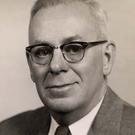
T.R., as his friends called him, was described as a man of wisdom, patience and humor. Alexander, associate general executive of the YMCA of Pittsburgh, entered office just as ACA completed work on its new national headquarters building. During his administration, the first ACA camp directory was issued, and a further move was made to establish a strong public relations program. The standards program was developing under a grant from the Kellogg Foundation. Some indication of the conflict between local and national perspectives can be deduced from Alexander's statement that, "The Board must move to higher ground and divorce itself from personal and sectional view points."
Fred Rogers, 1959-1960
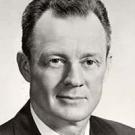
When Fred Rogers, director of Camp Lincoln n Minnesota, became president, the Association was going through a rocky period of transition. Membership on the Golden Anniversary of the founding of ACA in 1960 was at an all time high – 7,408. And a goal was set for 10,000. The growth of ACA at that time was threatened by two major events: a change in the dues structure, which also called for a substantial increase in dues to cover costs; and the increasing resistance to the implementation of standards visits for camp accreditation. During this tense period, the historical division between private camps and agency camps appeared to heal itself as both groups worked to resolve the difficulties.
Stanley J. Michaels, 1961-1964
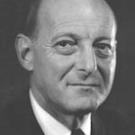
Stanley J. Michaels was owner/director of Camp Nahelu in Michigan and very active in ACA, both with the national office and the Michigan Section. As the president, he also served as chair for the Fund for Advancement of Camping and as National Standards chair – at the beginning of the implementation and accreditation of camps. As the legislative chair, Michaels was instrumental in establishing a relationship with officials in Washington, D.C., benefitting the Association.
John H. Dreasen, 1964-1966
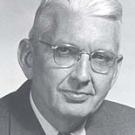
As the supervisor of city and country branches of the Children's Aid Society in New York City, John H. Dreasen was no stranger to child development. He was the ACA representative and chair of the National Social Welfare Assembly Camping committee, member of ACA national convention Policies and Practices committee, and a member of the New York Section board. He was a member of the Executive and Nominating committees, and the region II representative of ACA's Headquarters Expansion Advisory Committee.
Howard G. Gibbs, 1966-1968
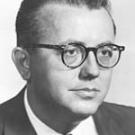
Howard G. Gibbs was the national director of Program Services for the Boys' Clubs of America, in New York, New York. After his term as national president, Gibbs served as chair of the national nomination committee.
Frank M. Washburn, 1968-1970
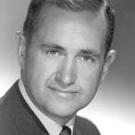
Frank "Scotty" Washburn not only served as national president, but also served as interim executive director for the Association in 1988 after Armand Ball retired. He joined ACA as a student member in 1948, and served as the president of Oregon Section. During his presidency with ACA, the Interracial-Faith Policy was adopted. Washburn is a life member and charter member of the Acorn Society. He was the 1974 recipient of the Distinguished Service Award. He retired as Executive Director of YMCA Blue Ridge Assembly in 1985.
John J. Kirk, 1970-1972
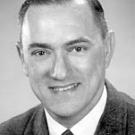
John J. Kirk was director and associate professor at New Jersey State School of Conservation in Branchville, New Jersey. In addition to serving as national president, he served as national vice president and chair of the National Standards Committee.
Nelson E. Wieters, 1972-1974

Nelson E. Wieters was an assistant professor of Recreation and Outdoor Education at George Williams College in Downers Grove, Illinois. He was also director of "Man and His Land" expeditions -an experimental program to produce awareness of environmental relationships among adolescents. Wieters also served as the chair for the Department of Leisure and Environmental Resources Administration at George Williams College. He served as a board member for the Fund for the Advancement of Camping (FAC), where he initiated a gift to the FAC following the 1966 ACA national convention for the purpose of establishing Camp Director Institutes (CDI). In addition, Wieters chaired a national task force for the development of the CDI's. He received the honor of being the "first certified camp director of ACA" – a distinction he shared with Edie Klein. He also served as the dean of the Midwest Training Center for ACA.
Armin F. Luehrs, 1974-1976
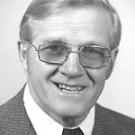
Armin F. Luehrs' term as national president bridged the transition of national executives and provided steady leadership during a difficult financial period in ACA's history. A graduate of George Williams College, Luehrs devoted his entire professional career to organized camping and the YMCA. He spent twenty-two years directing and supervising camps in Iowa and Minnesota. He served in many roles at the section level including president of the Minnesota Section. He served as chair of the 1967 regional convention, national convention chair in 1956, chair of the National Legislative Committee, Program Services Committee member, Endowment Committee chair, and national vice president.
Thomas Curtin, 1976-1978
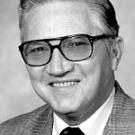
Thomas Curtin was a champion of the camp experience. He was very involved with the Fund for the Advancement of Camping, which was instrumental in furthering the mission and goals of the Association, funding research throughout the 70's and 80's. In addition, he was a member of the Acorn Society and a recipient of the National Honor Award.
John T. Howe, 1978-1980
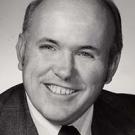
In 1958, John T. Howe became a full-time director for his family's camp, Skylake Camps for Boys near Bockway, Lake Tahoe. He purchased the camp in 1970. He has served the camp community in many capacities, including Western Region representative and president for the Private Independent Camp Advisory Council. During his presidency with ACA, the life member program was started and ACA moved to an accrual accounting system. His focus was on camps, and how to help them have a greater impact. Howe also served ACA as the first "I Believe" chair, an Acorn Society chair, a member of various boards and committees, and as a camp visitor for forty seasons. In 2001, along with his sister, Marian Howe Andersen Herndon, Howe established the Golden Quill and Golden Lens awards as a memorial to his parents, J. Wendell and Ruth T. Howe. The awards were designed to encourage and recognize excellence in writing and photography.
Betty van der Smissen, 1980-1982
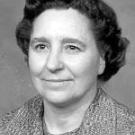
Dr. Betty van der Smissen served ACA as national research chair, member of the standards rewrite committee, the national standards committee, and parliamentarian for the Council of Delegates. In addition, Dr. van der Smissen had many section and region responsibilities. Her publications include Bibliography of Camping Research, Resident Outdoor Education, and Nature Activities, as well as two film strips – Liability Aspects of Recreation and Physical Education.
Charles Kujawa, 1982-1984
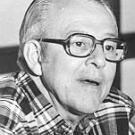
Charles Kujawa was on the national board of YMCA Camping Services and director for Youth and Camping - Greater New York. He was instrumental in ACA's Interracial-Interfaith Policy in 1968. He served two terms on ACA's National Board of Directors, served as chair of the National Program Services Committee, and received the Hedley Dimock Award for outstanding service to camping and continuing contributions in creative thought and dedication to the highest values in camping.
Jean McMullan, 1984-1986
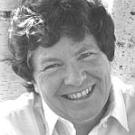
Jean McMullan began her career in camp after her career in music, including serving as a cellist with the Portland Symphony Orchestra. She is the owner/executive director of Alford Lake Camp in Hope, Maine and has extensive experience with camp in New England. She served the New England section in many roles, served twice as the national convention chair, served as a member for the national Board of Directors, as vice president for field services, and was the chair of the national leadership committee. Since her presidency, McMullan continues to serve the Association as a member of the professional development and accreditation task force and a member of the 20/20 Vision founding group.
Richard Chamberlain, 1986-1988
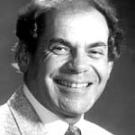
Richard Chamberlain is a consultant in Camping and Long-Range Planning. He is the co-founder/owner of TripMaster, and a past president and recipient of the Distinguished Service Award for the New England section. Before serving as national president, Chamberlain served as national vice president for field service, as well as a member of ACA's Development Commission. He was the chair of section presidents-elect, convention chair, and chair of ACA's Council of Religiously Affiliated Camps. In addition to his work with ACA, Chamberlain was a co-founder and the first chair of the International Camping Fellowship Steering Committee.
Edie Klein, 1988-1990
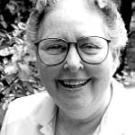
Edie Klein was the director of Undergraduate Curriculum for the deptartment of Recreation and Leisure Studies at the University of Georgia, and director of Pine Forest Girls Camp in Gteeley, Pennsylvania. She held several roles on the national board, served as vice president of field service, national leadership chair, program chair of 1985 national convention, and dean of DCl's. Klein was affiliated with the Southeastern Section and served in many roles, including section president, leadership chair, and standards trainer/visitor.
Charles Ackenbom, 1990-1993
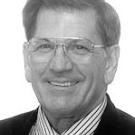
Charles "Chuck" Ackenbom is a Lifetime member of ACA. He served as Virginias Section president for two terms, a regional chair on the ACA Board, and a co-chair of the International Camping Conference in Washington D.C. , which was held for the first time in the USA. In recognition of outstanding service to organized camping, Ackenbom received a regional service award and the national Distinguished Service Award. He is the owner/executive director of Camp Friendship in Palmyra, Virginia, which he founded in 1966 after five years of service in the Navy as a Naval Aviator.
Connie Coutellier, 1993-1995
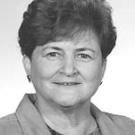
Connie Coutellier served ACA as a member of the national standards board, trainer, instructor, visitor, and chair of 1986 national convention held in Kansas City, Missouri. In addition, she served as the chair of the National Camp Executives Group. Coutellier served on the ACA national staff prior to becoming the Director of Training and Council Resources for Camp Fire USA.
Susan "Suz" Welch, 1995-1996
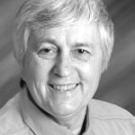
Suz Welch was the executive director and camp director of Heart of the Hawkeye Council for Camp Fire USA in Boone, Iowa. Prior to becoming national president she was a member of the national board as chair of the Mid-America Region. In addition, she participated as a member of the membership task group, and through her affiliation with the Iowa Section, as a certified standards trainer and outdoor living skills instructor. Welch also served as section president, vice president, secretary, newsletter editor, legislative chair, and ethics chair.
Donald S. Cheley, 1996-1999
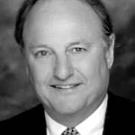
Donald S. Cheley is the third generation owner/executive director of the Cheley Colorado Camps, in Estes Park Colorado. He served ACA in many roles, including the Chair of the American Camp Foundation for many years. Before serving as president, Cheley was a member of the national board as the Western Region chair, vice president of Field Service, and AIC liaison. He also served as the chair of the national nominating/awards committee, chair of the International Cultural Exchange Organization, a member of the Public Policy committee and Insurance Committee, president of the Western Association of Independent Camps, and Division II chair of the National Capital Campaign. He is affiliated with the Rocky Mountain section, and served as president. Currently, Cheley serves on the board of directors for the First National Bank of Estes Park, the board of the Rocky Mountain Nature Association, a United States Representative to the International Camping Fellowship, and as an international representative for ACA.
Rodger M. Popkin, 1999-2002
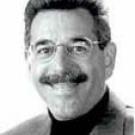
Rodger Popkin is a second generation camp owner and director. He has been active in ACA since the early 1970s and has served on the National Board and as the National President 1999-2002. He is committed to expanding the camp experience for underserved populations. Rodger currently owns and directs Blue Star Camps in Hendersonville, North Carolina, with his wife, son, daughter, and son-in-law.
Marla Coleman, 2002-2005

Marla Coleman has been an active ACA volunteer since the 1980s. She has served on section and national committees, been involved with national partnership collaborations, helped produce section and national videos, and is a regular contributor to Camping Magazine and a speaker at regional and national conferences. During her tenure as national president, she spearheaded ACA's rebranding effort and continues to be an advocate for the value of a camp experience and its importance as an educational component of youth development. She also is co-author of Crisis Communications: A Handbook for Camps and Other Youth Programs, and she is the author of the blog, "Campfire Stories for Parents." Along with her family, Coleman is co-owner/director of Coleman Country Day Camp in Merrick, New York.
Ann Sheets, 2005-2008
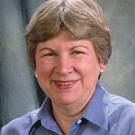
Ann Sheets is a certified camp director, parent of two children, and a professional with Camp Fire USA First Texas Council. She is the immediate past national president of ACA and has been an active ACA volunteer for over thirty years, serving also as national treasurer, national board member, standards instructor, conference presenter, and currently serves as a member of the 20/20 Task Force.
Peter Surgenor, 2008-2011
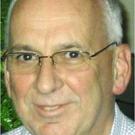
An advocate of the camp experience as a contributor to human and faith development, Peter Surgenor is the national president of the American Camp Association. A certified camp director, he has served in Presbyterian faith-based camps for over thirty years, and brings extensive experience to his position. His experience includes participation as an ACA volunteer since 1977, and he has also been active at a local level as president and board member of the Western PA, Keystone, and New York Sections. On a national level, he has served as an ACA national board member, chair of ACA's National Education Committee, faculty for Camp Director Institutes, and a leader in the ACA standards program. As president, Surgenor is committed to keeping ACA strongly focused on the organization's contributions to the development of campers of all ages.
Arthur L. Wannlund, 2011-2012
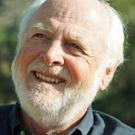
Art Wannlund has served as ACA’s treasurer, a member of the 20/20 Task Force, and chairman of the Accreditation/Education Task Force. Art is the immediate past president/CEO of the YMCA of Orange County, California. He and his wife Rachel now reside in Colorado, where he is active with the Rocky Mountain section. His past experience with ACA includes service on the national board, the national conference program committee, the interim board development committee, and as a standards visitor. Art worked diligently during 2010 as president-elect on the transition committee as sections roll-up into the national organizations and to formalize the agreements with ACA affiliates. He has also championed the associations’ growth strategies, especially in the area of professional development.
Tisha Bolger, 2012-2016
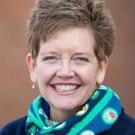
Tisha Bolger is the Chief Operating Officer of Girl Scouts of Minnesota, Wisconsin River Valleys in St. Paul, where she directs operations including membership, volunteer services, programs and properties for the organization which serves 45,000 girls and 18,000 adults, with 17 facilities and 170 staff in a 49 county jurisdiction. She was involved in the merger of five Girl Scout councils and oversees the operation of multiple resident camps serving 4,000 girls and day camps serving 4,200 girls annually. She formerly served as executive director of the Amherst H. Wilder Foundation and as director of Alpha Youth Care Services in Minnesota. A graduate of the University of Minnesota and Carroll College, Tisha served on the ACA Northland Section board and on the ACA section transition team. She has extensive experience in fund raising and training and served two terms on the National Board and two terms as ACA’s president.
Ross Turner, 2016-2019

Ross Turner is the President and CEO of Guided Discoveries, which develops and operates outdoor educational programs and summer youth camps. The Guided Discoveries family of programs include the Catalina Island Marine Institute, Catalina Sea Camp, Camp Fox YMCA Camp, Astrocamp, Astrocamp Summer Adventure, and CIMI Tall Ship Expeditions aboard the Tole Mour. Guided Discoveries has grown into an organization that serves over 45,000 children annually. Ross is described as an education entrepreneur who provides services outside walls and/or boundaries in both traditional and nontraditional ways and in various locations in and outside of California. Ross is the former President of the Western Association of Private Camps (WAIC). He is skilled in nonprofit development and management, as well as an entrepreneur and an innovative “big picture” thinker. Ross is serving his second term on the Board and his first term as Board Chair. During Ross's term, the Board has adopted contemporary non-profit titles for the President/CEO and Board Chair.
Scott Brody, 2019-2021

Scott Brody is an educator and thought leader in the areas of 21st Century Learning, Workforce Development and Child Development. He is the Founder of Everwood Day Camp in Sharon, MA and the Owner and Director of Camps Kenwood & Evergreen. Scott is also a strategic partner of IDEAS Education in Beijing, China. Scott is an Executive Board member of the Partnership for 21st Century Learning in Washington, DC and leads P21’s work in “Beyond School” education. Scott has led multiple briefings for the US Congress on the ways in which high quality camp experiences promote college and career readiness and speaks globally on these issues on behalf of the camp profession. Scott is the Government Affairs Chair of both the American Camp Association and the Massachusetts Camp Association and is a member of ACA’s CARE Committee. Scott is a member of the Board of Directors of the Foundation for Jewish Camp and is past Vice President of American Camp Association. He is also the author of an award-winning article for Camping Magazine entitled “Teaching the Skills that Children Need to Succeed”. Scott is an honors graduate of UC Berkeley and received a Juris Doctor from Boston College Law School in 1990. Scott is serving his first term as Board Chair on the ACA National Board.
Dr. Lizabeth Fogel, 2021-Present

Dr. Lizabeth Fogel is the Vice President, Learning, Strategy and Development at DoGoodery, LLC. She has decades of successful experience in learning content development, educational media, and business. Prior to moving to DoGooderyLizabeth was the Managing Director of USC Center EDGE (Engagement Drive Global Education). The Center for Engagement-Driven Global Education (EDGE) fuels interdisciplinary partnerships to bring relevant, sustainable innovation to scale in the crucial areaof educational engagement.From 2007 until 2016 she was the Director of Education for The Walt Disney Company, focused particularly on serving: Imagineering, Studios (including Pixar) and Corporate Citizenship. She played a critical role advising and guiding multiple business units on developmental milestones and educational (formal and informal) best practices. Lizabeth’s success comes from her ability to reach across business units and seamlessly integrate external partners into a collaborative, sharedvision. She was responsible for the creative vision, integrity, and educational validity of the company’s products and programs. This includes, but is not limited to, the Disneynature Educators’ Guides, Shanghai Disneyland Resort informal learning experiences, outreach content and programs for a variety of films (ex. Finding Dory, The Jungle Book, Inside Out, Big Hero 6) and Pixar in a Box, a collaboration between Pixar Animation Studios and Khan Academy. Annually these materials reach approximately 400,000 students nationwide and receive around 4 million general audience impressions. Lizabeth’s leadership extends well beyond her education and corporate work. She is the Chair of the National Board for the American Camp Association. Additionally, she is amember of the boards for two for-profit companies; Participate Learning and Makematic who develop innovative tools and content for educators and learners on a global scale. She has cultivated a world-class network comprised of individuals with an array of expertise that she leverages in innovative ways by working within interdisciplinary teams. Lizabeth is serving hersecond term on the ACA Board of Directors and her first as Board Chair.
